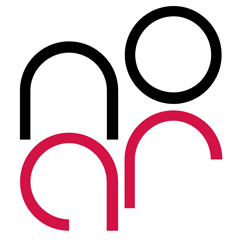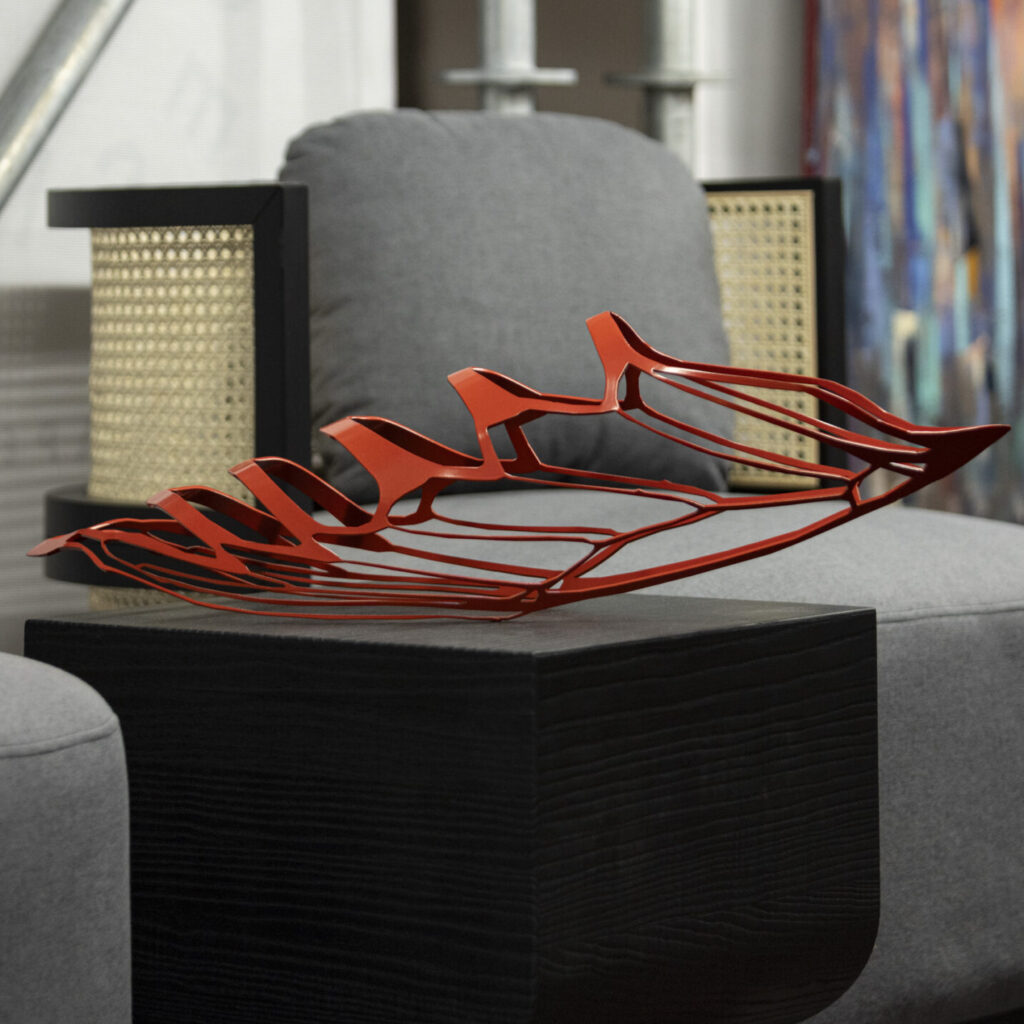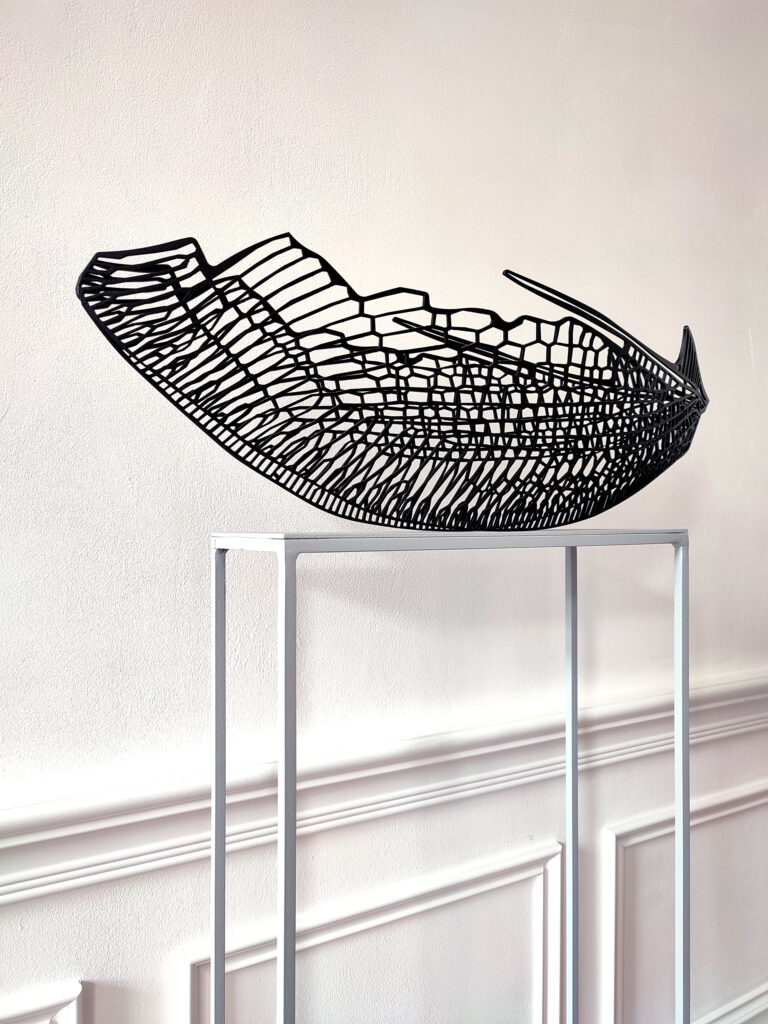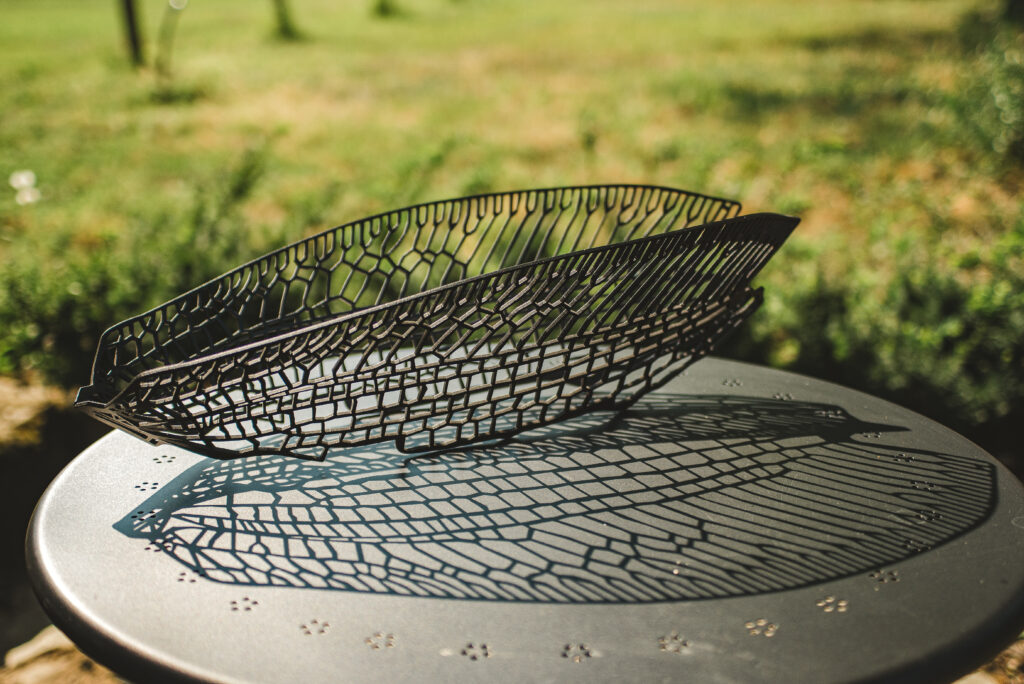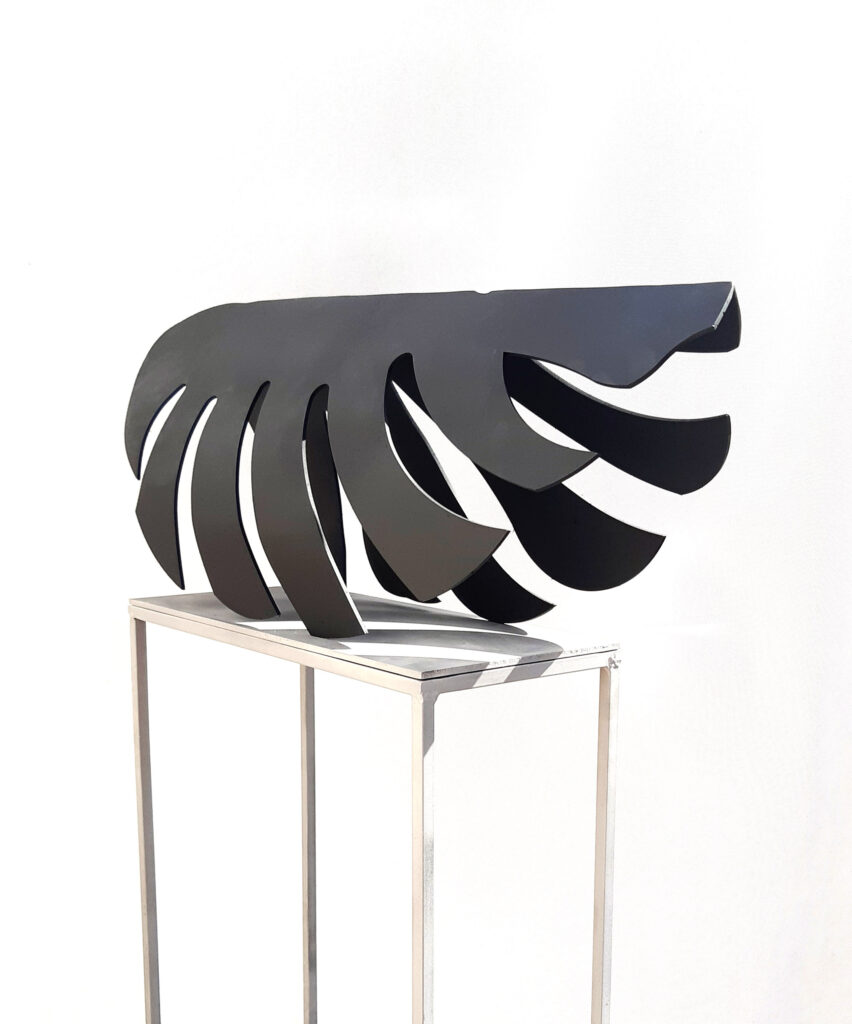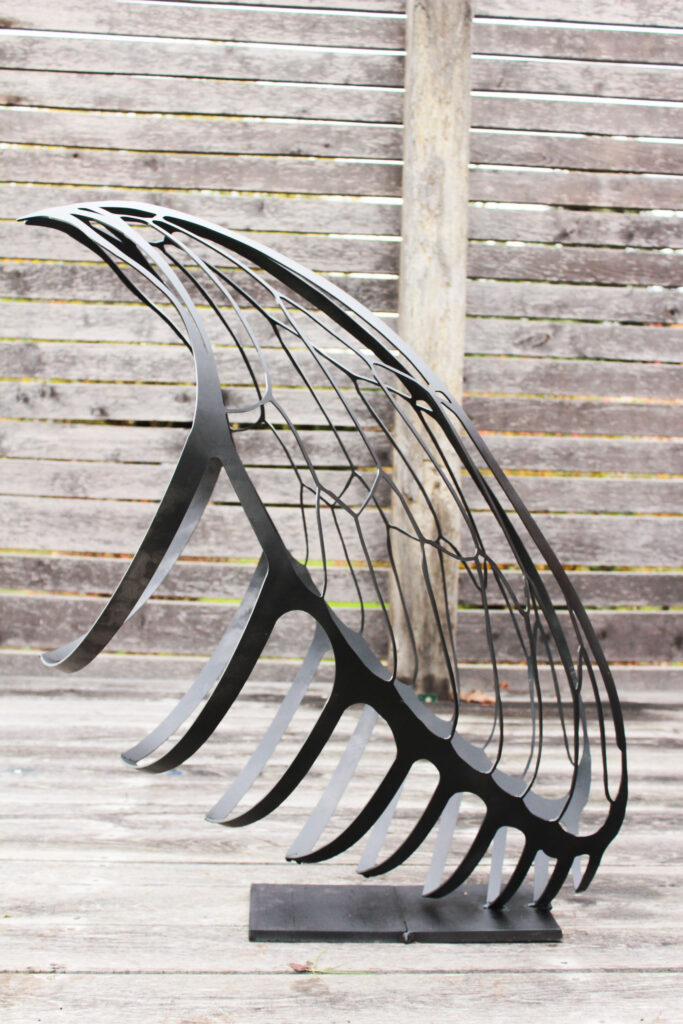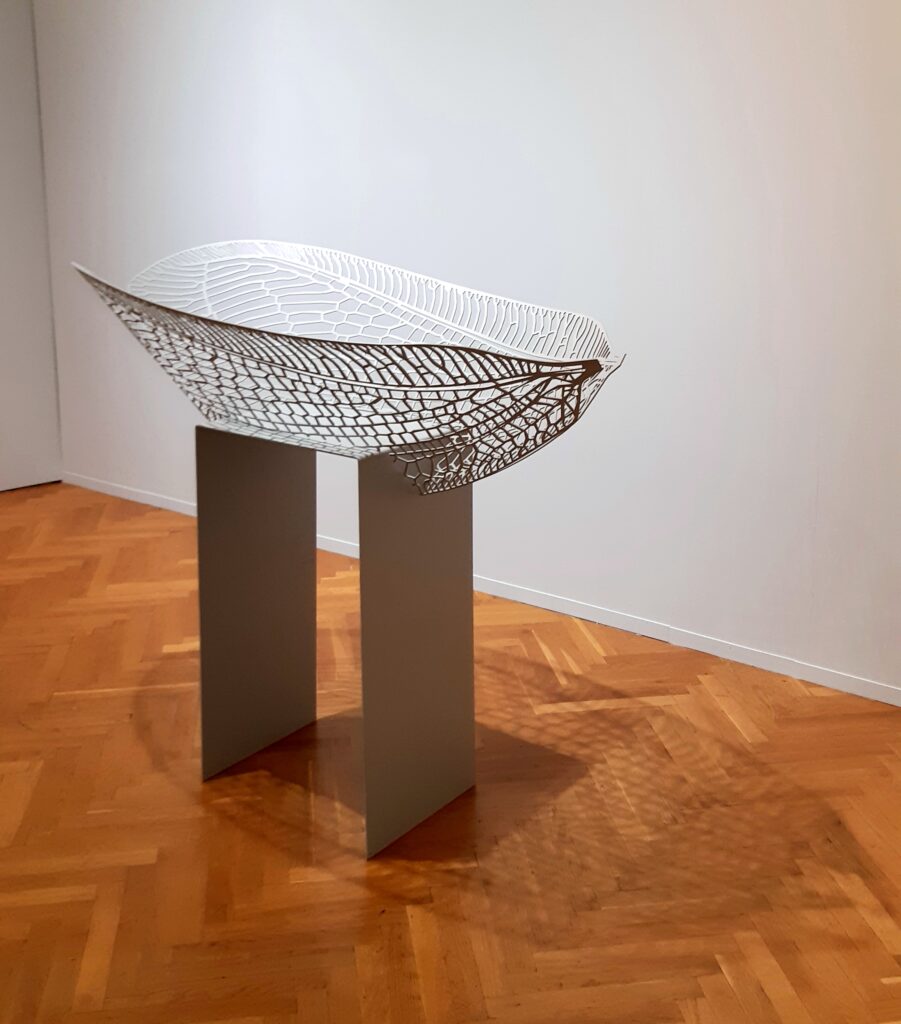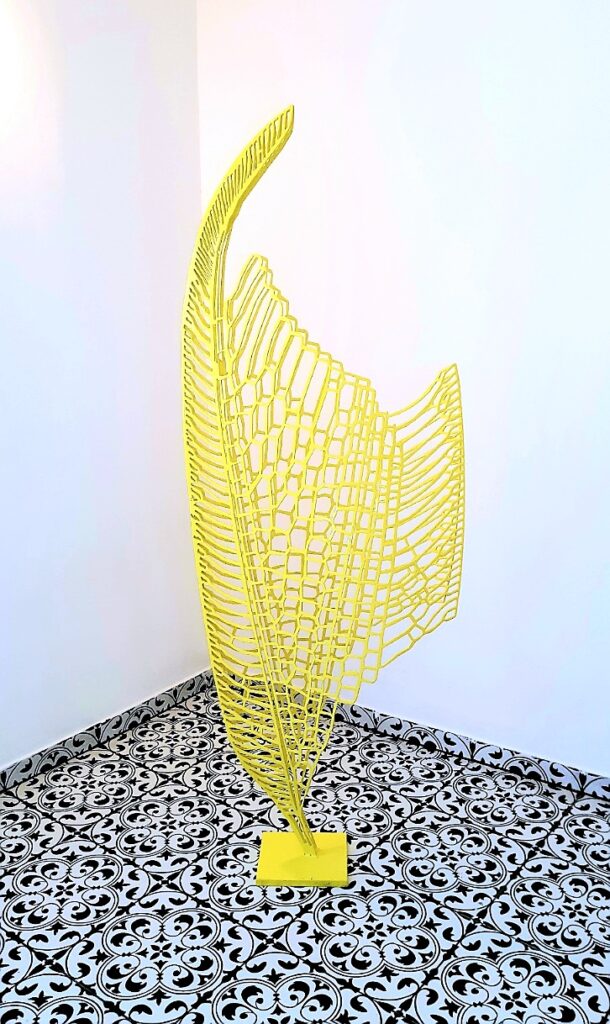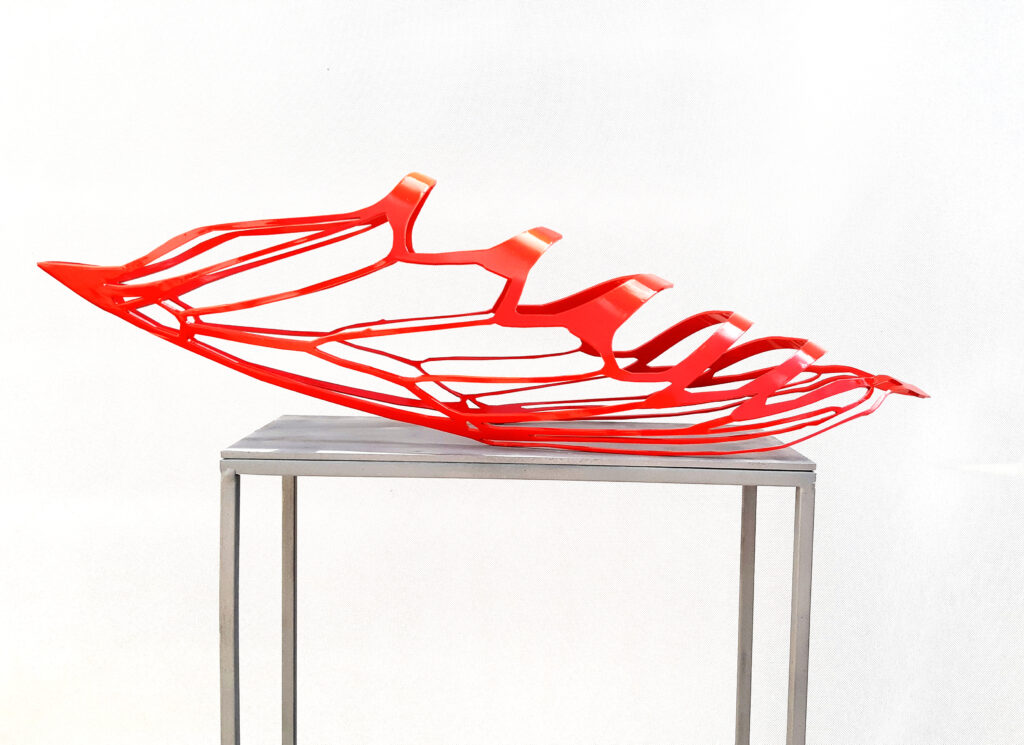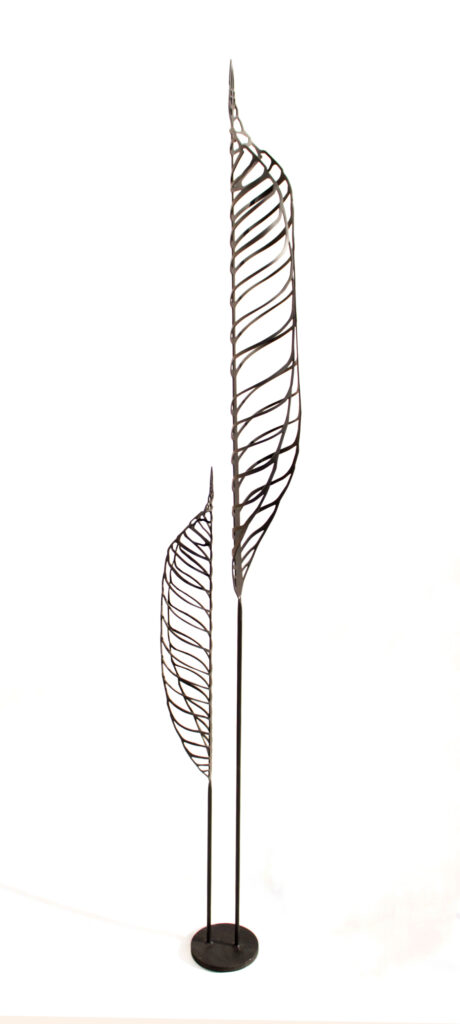Nóra Szirmai
Nóra Szirmai graduated from the Hungarian University of Fine Arts in 2010, majoring in sculpture. In 2009, she studied sculpture in Italy. In 2021, she graduated from the Budapest Art Mentor program. She has exhibited at the Káli Art Park, the Collegium Hungaricum in Vienna and the Budapest Young Art Fair.
Szirmai’s works are based on the observation of natural motifs and networks: I am immensely interested in relationships, systems and networks including human relationships, the complex structure of the psyche, the interconnection of neural pathways, as well as emotional interconnections. Hence my fascination with forms where these things are present in tangible, visible forms, such as the veins of insect wings, vascular networks, plant elements. All of my works deal with this theme. The way nature has resolved these connections is fantastic, and for me it adds to that the mentality that focuses on connections that are intangible or only visible in special circumstances. On the one hand, the works are rewritten and magnified natural forms, based on the softest, most delicate phenomena, but also expressed in one of the hardest, most rugged and masculine materials: steel. The physically demanding working of this hard and heavy material, i.e. sculpting steel, therefore results in exciting tension with the lightness of the forms and the delicate balance that most of the works create. For many of her sculptures, Nóra draws inspiration not from nature, but from unconscious energies, perhaps not even expressed at the level of our own sensations. As she says, ’My forms often mix childhood inspirations with the absurd realities of adult life. Emotions, sensations, moods, concepts and sights that are difficult to express in words are my sculptures. They are largely the result of an instinctive, emotion-driven creative process.’ All in steel. Steel is not usually found in sculpture representing our unconscious, rather in structure lifting equipment. The painted steel structures, especially in the colours that Nóra uses (yellow, orange or red), add to this industrial feel, as they evoke heavy industrial equipment paired with the typical colours of building engineering. The delicate and ethereal quality of bird wings and angel wings is thus combined with the materiality of steel, the robustness of steel sculpture and the garish yellow colour. The tension is further heightened by the fact that Nóra works on a large scale (her sculptures are usually human height), so the works are not small or restrained, and their softness is matched by their immense strength. Perhaps because of their size, we can also sense that the works are a kind of living being, with their own personality, spirituality and emotional charge, and that their entity is not necessarily related to the phenomena they are meant to represent. The wing is therefore not (just) a wing, it is much more than that; the neural pathway is not just a map of cellular connections, and the leaf goes far beyond the drying and fading, ephemeral beauty that awaits us in the autumn woods.
About the objects
Beauty of Destruction No. 1., 5.
The Beauty of Destruction series was made at the beginning of the pandemic, when it was not yet clear where it would all end. They’re all a cropped version of the same insect wing shape. The artist took them, tore them up and still got a beautiful shape out of each one. The thought that occurred to her at that moment was: given an unknown and bad situation, how can something good come out of it.
Healing
The tiny fragile insect wings, in this case also, manifested in a hard and rough material, steel. Her sculpture, Healing, is inspired by trauma and processing and post-traumatic growth. As with all her sculptures, shadow plays an important role here as a layer and meaningful extension of the artwork. The colour red in which the bipolarity of the symbolism of colour is most clearly visible. It is the colour of intensity and visceral.
Something red
Her work called Something Red is also laser-cut, bent and painted steel, constructed from a distorted insect wing. The colour red is an important element in her works, a colour with very many meanings and a very strong character. She wanted to create a form out of these fragile phenomena that conveys strength and determination.
Hommage a philodendron
Hommage a philodendron, as the name suggests, is a tribute to the plants that inspired this work. It is also a laser-cut, painted sculpture, which here again exposes a fragile structure, the leaf of the plant. It is philodendron because the leaf of the plant itself is sculptural, a true work of art like any living thing on earth.
Floating
The work Floating is also an ” boat ” created by enlarging the wings of an insect, which lies floating on its support structure below and within.
Steadily
Work in steel, assembled by laser cutting, rolling and welding. Most of Nóra Szirmai work is associated with plant structures. Steadily, as the title suggests, represents the steadiness and elegance that is inherent in plants.
Missing parts
Her laser-cut, welded, painted steel sculpture, also constructed from trimmed insect wings. This is Nóra Szirmai only yellow coloured work. The color itself symbolizes the joyfulness and vitality that contrasts with the torn wings, a tribute to the pandemic.
Last breath
Last breath is a call for proposals that asked how much time do humans have on earth, whether climate change really means the end of our existence, and if so, what will happen? In response to this question, the artist created The Last Breath, which is also a work based on the insect wing and plant structures she uses a lot. Laser cut, rolled, painted sculpture.
